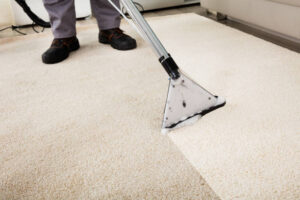Pickleball has become one of the fastest-growing sports in the United States, drawing players of all ages with its blend of tennis, badminton, and ping pong. As its popularity continues to rise, more individuals, communities, schools, and recreational centers are investing in building dedicated pickleball courts. If you’re considering pickleball court construction or installation, understanding the process from planning to completion is essential for creating a safe, functional, and enjoyable playing environment.
Why Build a Pickleball Court?
Although many players start by using modified tennis courts, dedicated pickleball courts offer a better playing experience. These purpose-built courts ensure proper dimensions, surface quality, net height, and visibility—factors that significantly affect gameplay and safety. A dedicated court also increases the value of residential properties, enhances recreational facilities, and fosters community engagement.
Whether you’re installing a single backyard court or developing multiple courts in a public park, proper planning and professional execution are key.
Step 1: Planning and Site Evaluation
The first step in constructing a pickleball court is evaluating the proposed site. The location should be flat or capable of being graded, with adequate drainage and minimal obstruction from trees, buildings, or uneven ground.
Key considerations include:
-
Court orientation: North-south orientation is ideal to minimize sun glare during morning and evening play.
-
Space requirements: A standard pickleball court measures 20 feet by 44 feet, but the total play area (including safety zones) should be 30 feet by 60 feet.
-
Surface drainage: Ensuring proper water runoff prevents long-term surface damage.
For multi-court installations, space should be allocated for walkways and fencing to separate courts and ensure player safety.
Step 2: Choosing the Right Court Base
Pickleball courts are typically built using one of two primary base materials: asphalt or concrete.
-
Asphalt courts are more affordable and quicker to install but may require resurfacing every few years due to cracking or weather wear.
-
Concrete courts are more durable and have a longer lifespan but come at a higher upfront cost.
A properly compacted sub-base (usually crushed stone) is laid before the base layer to provide stability and drainage. A slight slope is also recommended (about 1%) to aid water runoff without affecting ball bounce.
Step 3: Surface Coating and Color Application
Once the base is installed and cured, the court is coated with an acrylic surface layer. This coating improves grip, minimizes injury risk, and ensures consistent ball bounce.
Acrylic coatings come in a variety of colors. Most courts use two contrasting shades—one for the playing area and another for the surrounding zones—to help players visually track boundaries.
These coatings are UV-resistant and weatherproof, designed to withstand outdoor conditions while maintaining vibrant color and texture.
Step 4: Line Striping and Court Markings
Precision in line striping is crucial to ensure that the court meets USA Pickleball regulations. The main lines include:
-
Sidelines and baselines
-
Non-volley zone (the kitchen)
-
Service areas
-
Centerlines
These lines are typically painted using high-quality, weather-resistant paint. Courts can also be marked with multiple colored lines if designed for dual use (e.g., tennis and pickleball).
Step 5: Net System Installation
Pickleball nets differ from tennis nets in height and tension. The regulation pickleball net is 36 inches high at the sidelines and 34 inches at the center.
Options for net systems include:
-
Permanent posts: Ideal for dedicated courts, these are installed directly into the ground or concrete.
-
Portable nets: Best for temporary courts or shared spaces.
Permanent net posts are typically installed in sleeves for easy removal or replacement, ensuring longevity and adaptability.
Step 6: Optional Add-ons and Amenities
Enhancing your court with additional features can significantly improve the player experience.
Popular add-ons include:
-
Perimeter fencing: Helps contain balls and ensure safety.
-
Court lighting: Enables evening play. LED lights are energy-efficient and provide optimal brightness.
-
Benches and shade structures: Offer comfort between matches.
-
Scoreboards and signage: Useful for tournaments and organized play.
-
Water fountains and storage lockers: Add convenience and appeal to larger facilities.
These amenities can be tailored to residential courts or larger recreational complexes.
Cost of Pickleball Court Construction
The total cost of building a pickleball court can vary widely depending on materials, location, features, and customization. On average:
-
Basic backyard court: $15,000 – $25,000
-
High-end or multi-court facility: $30,000 – $100,000+
Cost factors include:
-
Site preparation
-
Surface material
-
Net system and accessories
-
Fencing and lighting
-
Labor and equipment
Getting quotes from multiple licensed contractors with experience in sports courts will help ensure quality and competitive pricing.
Maintenance Tips
To preserve your investment and ensure player safety, regular court maintenance is necessary.
-
Sweep or blow off debris regularly
-
Inspect for cracks or water pooling
-
Repaint lines and recoat surfaces every 4–8 years
-
Maintain proper drainage
-
Clean stains or algae buildup promptly
A well-maintained court will offer many years of recreational use with minimal repair costs.
Conclusion
Building a pickleball court is an exciting project that brings lasting value to residential, recreational, and commercial spaces. From planning and site prep to surfacing and net installation, every step plays a vital role in creating a top-quality court.
By investing in professional pickleball court construction and installation, you ensure that players of all levels can enjoy a safe, high-performance court that supports one of the most enjoyable and inclusive sports today.
Whether you’re aiming to build a backyard retreat or a multi-court community hub, thoughtful design and quality materials will ensure years of play, fun, and fitness.









